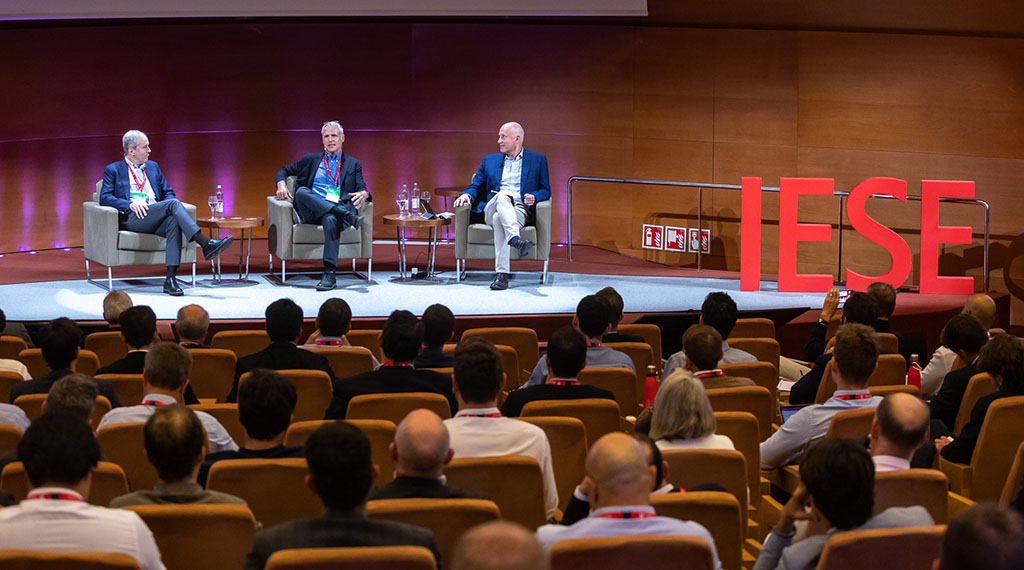Stories
5 Tips for Making International Search Funds Work
IESE’s 3rd International Search Fund Conference looks at chemistry, culture, and challenges
October 10, 2018

The search fund model takes entrepreneurs and investors on a years-long journey from funding to sale, creating unique demands in everything from ensuring chemistry among backers to building an effective board.
The recent 3rd International Search Fund Conference gathered first-time and experienced searchers, investors and entrepreneurs on IESE’s Barcelona campus to discuss this expanding industry and the challenges it presents, at a time when the model is gaining traction not only in the U.S. but also internationally.
Here, just a few of the lessons learned as the industry matures:
1. Build chemistry
Searchers and investors have to be on the same page for the search fund model to work. That means lining up the right investors – ideally, a combination of international backers (who facilitate access to capital) and locals (who bring local perspective, knowledge of the market and relationships). Everyone involved must understand the particularities of this type of investment. Having the right investors is also key to building a relationship of trust post-acquisition, as a new board is created and the new CEO begins to manage and grow the company. And it’s always wise to have “the right advisers and a good lawyer,” advises Gerald Risk, an entrepreneur, investor and lecturer at Stanford Graduate School of Business.
2. Mind the risks
Although search funds tend to bet on companies with recurring revenue and a stable cash flow history, identifying an acquisition and taking over a company always involve risk. Never underestimate the value of verified and reliable information on everything from sales to labor costs. Without it, assessing the true value of a company is difficult pre-acquisition, and a new CEO may be in for unpleasant surprises post-acquisition. Other risks, especially in Latin America, are companies’ limited access to debt, the size and fragmentation of markets and underdeveloped mergers and acquisitions markets – all factors that may limit the long-term growth of a company.
3. Remember culture
As the search fund identifies possible acquisitions, cultural factors should not be overlooked: “People sell their businesses to people they like,” says Mario Sicilia, a searcher and current CEO of BOMI Mexico, a health logistics company. Those factors also affect day-to-day management: “The seller’s culture is also the culture of the workers and the culture of the company,” he adds. That should be kept in mind when designing strategies and projects aimed at growing acquired companies, or when considering new acquisitions to consolidate the initial purchase.
4. Build a good board
Boards of directors are important to any company, but they are perhaps even more so in the search fund model, since the new CEO may not have the experience that many executives have. The board should be a reasonable size and have engaged, productive members. For Karen Moriarty, an early search fund creator and CEO of Carillon Assisted Living, the ideal number of members is five – with three of those having strong operating experience. “The feedback that we get is that those directors who are involved, engaged, and really willing to work through the problem at hand … are the ones that can have a major impact,” said Coley Andrews, co-founder of Pacific Lake Partners.
5. Pay attention to people
Acquiring and managing a company that is already operating is one of the big advantages search funds offer over other investment vehicles. But managing existing employees and hiring new talent are among the greatest challenges a new CEO may face. Current employees are likely to be somewhat wary and perhaps even distrustful. Establishing a reputation as an effective leader and winning the trust of employees should be top priorities. It’s important to take the time to build relationships with key people in the organization, have frequent conversations with teams and not rush into drastic decisions or make radical changes, especially on personnel issues.
For more information on international search funds, see IESE’s International Search Funds 2018 report, prepared in partnership with Stanford Graduate School of Business.

